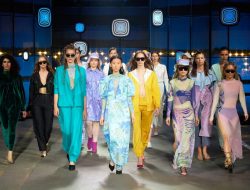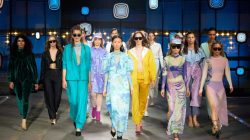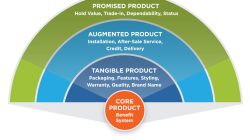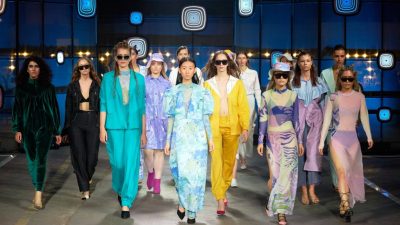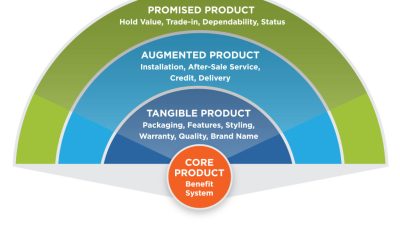Consumer Trends Shaping the Purchase Behavior in Online Fashion Retail takes center stage in today’s dynamic marketplace, inviting fashion enthusiasts to explore how evolving preferences and innovative technologies are revolutionizing the way we shop. With increasing reliance on social media, brand loyalty, and a growing emphasis on sustainability, consumers are not just shopping online—they are making informed choices that reflect their values and lifestyles.
As the landscape of online fashion retail continues to transform, understanding these consumer behaviors becomes essential for retailers aiming to thrive. From the impact of augmented reality on shopping experiences to the rise of ethical fashion brands, these trends highlight the critical interplay between technology, consumer preferences, and the future of retail.
Understanding Consumer Behavior in Online Fashion Retail
The online fashion retail landscape is continuously evolving, shaped by dynamic consumer behaviors and preferences. As shoppers increasingly turn to digital platforms for their fashion needs, understanding the factors influencing their choices becomes paramount for brands striving to capture their attention and loyalty. This section delves into the key elements that drive consumer behavior in this thriving market.
Factors Influencing Consumer Preferences
Consumer preferences in online fashion shopping are influenced by a multitude of factors that shape their buying decisions. Notably, convenience plays a pivotal role; the ability to shop anytime and from anywhere provides a seamless experience. Additionally, the variety of options and competitive pricing available online attract consumers seeking the best deals.
- Product Quality: Consumers prioritize quality, often relying on reviews and ratings to gauge the durability and style of products.
- Price Sensitivity: Promotional offers, discounts, and transparent pricing significantly affect purchasing choices.
- User Experience: An intuitive website design, easy navigation, and quick checkout processes enhance customer satisfaction and encourage repeat visits.
Impact of Social Media on Purchasing Decisions, Consumer Trends Shaping the Purchase Behavior in Online Fashion Retail
Social media platforms have transformed the way consumers discover and engage with fashion brands. The visual nature of these platforms allows users to explore styles, trends, and products effortlessly. Influencer marketing has become a powerful tool, as endorsements from trusted figures can significantly sway consumer opinions.
- Brand Discovery: Social media serves as a primary channel for fashion discovery, with platforms like Instagram showcasing the latest trends in real-time.
- Customer Engagement: Interaction through comments, likes, and shares fosters community and influences purchasing behavior.
- Visual Inspiration: Platforms such as Pinterest offer consumers a source of inspiration, leading to impulsive purchases triggered by visually appealing content.
Significance of Brand Loyalty
Brand loyalty is a critical element in shaping consumer trends in online fashion retail. Loyal customers tend to exhibit repeated purchasing behavior, often becoming brand advocates and influencing others within their networks.
- Emotional Connection: Brands that successfully create an emotional connection with consumers often foster loyalty that transcends price sensitivity.
- Consistent Quality and Service: A reputation for reliability in product quality and customer service solidifies trust and encourages repeat transactions.
- Loyalty Programs: Incentives such as rewards, exclusive access, and personalized experiences significantly enhance brand loyalty and encourage ongoing engagement.
In the competitive arena of online fashion retail, understanding and responding to consumer behavior is essential for sustained success and growth.
The Role of Technology in Shaping Consumer Trends
In the ever-evolving landscape of online fashion retail, technology stands as a powerful catalyst driving significant changes in consumer behavior. With the advent of innovative tools and platforms, shoppers are experiencing a seamless and dynamic shopping journey that enhances convenience and personalization. These technological advancements are not merely trends; they are shaping the very fabric of how we perceive and engage with fashion retail online.The integration of cutting-edge technologies has revolutionized the online shopping experience, providing consumers with tools to make informed decisions.
The rise of data analytics and artificial intelligence enables retailers to tailor recommendations that resonate with individual preferences, while also enhancing inventory management and customer service. Real-time data analysis allows brands to predict trends and adapt to consumer needs more swiftly than ever.
Augmented Reality Enhancing Shopping Experiences
Augmented reality (AR) is transforming the way consumers engage with fashion, offering a unique blend of physical and digital interaction. This innovative technology allows customers to visualize clothing and accessories in an interactive manner, enhancing their shopping experience significantly. The importance of AR in fashion retail can be highlighted through several key benefits:
- Virtual Try-Ons: AR applications enable shoppers to virtually try on outfits, significantly reducing the uncertainty associated with online shopping. For instance, applications like Nike’s “Nike Fit” allow users to scan their feet and find the perfect shoe size and style.
- Enhanced Product Visualization: Consumers can see how clothing fits and moves on their bodies, facilitating better decisions. Brands like Zara and ASOS have embraced AR technology to allow customers to visualize clothing in 3D.
- Interactive Content: AR offers dynamic content that engages users, making the shopping process more enjoyable. For example, fashion retailers use AR to create games or experiences that encourage consumers to interact with their products, boosting brand loyalty.
- Reduction of Returns: By providing a more accurate representation of how products will look when worn, AR helps minimize dissatisfaction, leading to lower return rates.
Mobile Applications Driving Consumer Purchasing Behavior
The proliferation of mobile applications has been a game-changer in how consumers shop for fashion online. With the rise of smartphones, shopping has become a more accessible and immediate experience, leading to a shift in purchasing behavior.The impact of mobile applications on consumer behavior is evident through several factors:
- Convenience and Accessibility: Mobile apps offer consumers the ability to shop anytime and anywhere, fostering impulse purchases and increasing overall sales. Brands like H&M and ASOS have developed user-friendly apps that enhance the shopping experience.
- Personalized Shopping Experiences: Mobile apps utilize data to personalize content, recommendations, and promotions. This targeted approach keeps consumers engaged and encourages loyalty. For instance, the Stitch Fix app curates personalized clothing selections based on user preferences.
- Seamless Checkout Processes: Integrated payment options within apps streamline transactions, reducing cart abandonment rates. Features like Apple Pay or Google Pay provide a fast and secure way to complete purchases.
- Social Media Integration: Many fashion retail apps now include social sharing features, allowing consumers to share their purchases and outfits on platforms like Instagram, further influencing shopping behavior through social proof.
Sustainability and Ethical Considerations
As consumers become more aware of the environmental and social impacts of their purchases, sustainability and ethical considerations have emerged as pivotal factors in the online fashion retail landscape. The shift towards eco-consciousness is not just a trend; it’s a fundamental change in consumer behavior that is reshaping the industry. This evolution challenges brands to adopt practices that align with consumer values, ultimately influencing purchasing decisions.The growing awareness of the fashion industry’s ecological footprint has led consumers to prioritize sustainable options.
This shift is evident as shoppers increasingly seek out brands that minimize waste, utilize eco-friendly materials, and adhere to ethical labor practices. In response, traditional retailers are adapting their business models to incorporate sustainability into their operations, thereby developing a competitive edge in a market where consumers are making purchasing decisions based on environmental impact.
Rise of Ethical Fashion Brands
The emergence of ethical fashion brands has significantly disrupted traditional retail practices. These brands prioritize sustainable production methods and ethical sourcing, appealing to a conscious consumer base. Their impact is profound, reshaping how fashion is perceived and produced. The following points detail the influential role these brands play in the current fashion ecosystem:
- Innovative Materials: Ethical brands often utilize sustainable materials such as organic cotton, recycled polyester, and Tencel, which reduce environmental harm while providing stylish options for consumers.
- Transparency: Many ethical fashion brands commit to transparency in their supply chains, allowing consumers to understand the origins of their products, thereby building trust and loyalty.
- Community Impact: These brands frequently engage in fair trade practices, ensuring that workers are compensated fairly and work in safe conditions, which enhances their appeal among socially responsible shoppers.
The rise of ethical brands has put pressure on traditional retailers to rethink their practices. As consumer loyalty increasingly gravitates towards brands with a commitment to sustainability, conventional retailers are being compelled to adopt similar ethical strategies. This shift illustrates a broader trend: consumers are not only interested in the product but also in the story behind it.
Consumer Attitudes Towards Sustainable Practices
Consumer attitudes towards sustainable practices reveal a growing preference for responsible purchasing. While conventional purchasing habits have historically focused on price and brand loyalty, modern consumers are prioritizing sustainability as a key driver in their buying decisions. The following factors highlight this shift in attitudes:
- Environmental Responsibility: Many consumers now view their purchasing choices as a reflection of their values, leading them to favor brands that prioritize sustainability over those that do not.
- Informed Choices: Shoppers are increasingly researching brands and products, looking for certifications and information that validate a brand’s commitment to sustainability, such as the Global Organic Textile Standard (GOTS) or Fair Trade certification.
- Willingness to Pay More: Studies show that a significant portion of consumers are willing to pay a premium for sustainable fashion, indicating a readiness to support brands that align with their ethics.
The contrast between sustainable practices and conventional purchasing habits is stark. While traditional retail often emphasizes fast fashion and low costs, the shift towards sustainability signifies a growing demand for quality, responsibility, and ethical considerations, marking a transformative phase in the online fashion retail market.
Personalization and Customization in Fashion Retail
In today’s competitive online fashion retail landscape, personalization and customization have emerged as essential strategies for engaging consumers and enhancing their shopping experiences. Tailoring offerings to individual preferences not only fosters brand loyalty but also drives sales. Shoppers now expect a level of personalization that makes them feel valued, leading to more meaningful interactions with brands.Retailers leverage various methods to create personalized shopping experiences for their customers.
By incorporating technology and consumer insights, they can effectively engage with shoppers and meet their unique needs. Below are the primary methods utilized by retailers to offer customization options:
Methods for Offering Customization
Effective personalization in fashion retail can significantly enhance customer satisfaction. Retailers implement numerous approaches to achieve this, including:
- Personalized Recommendations: Utilizing algorithms that analyze previous purchases, browsing history, and user preferences to suggest items that align with the consumer’s style.
- Customizable Products: Allowing customers to design their own clothing or accessories, such as choosing colors, patterns, and sizes, to create unique items that reflect their personal style.
- Tailored Marketing Campaigns: Sending targeted emails or notifications based on individual shopping habits and preferences to encourage repeat purchases.
- Virtual Try-Ons: Offering augmented reality (AR) features that let customers visualize how products would look on them or how they would fit with existing items in their wardrobe.
- Preference Surveys: Gathering consumer insights through surveys to better understand their likes and dislikes, enabling retailers to adjust inventory and marketing strategies accordingly.
Data analytics plays a crucial role in personalizing the shopping experience in online fashion retail. Retailers harness vast amounts of consumer data, allowing them to understand and predict shopping behaviors. By analyzing this data, businesses can effectively tailor their marketing strategies and product offerings.
“Data-driven insights enable retailers to create a seamless, personalized shopping experience that resonates with consumers.”
Advanced data analytics tools help fashion retailers track trends and customer interactions, leading to improved product recommendations and enhanced customer satisfaction. For instance, brands like Stitch Fix successfully utilize data analytics to provide personalized styling services, curating selections that align with individual tastes and preferences. This level of personalization not only increases conversion rates but also fosters long-term customer relationships, solidifying brand loyalty in a fast-evolving market.
The Influence of Social Proof and Reviews
In the competitive landscape of online fashion retail, social proof and customer reviews play pivotal roles in influencing consumer purchase behavior. Social proof, which encompasses customer ratings, testimonials, and influencer endorsements, significantly shapes how potential buyers perceive a brand or product. As more consumers turn to digital platforms for their shopping needs, the impact of customer feedback and social validation becomes increasingly crucial in driving sales and building brand loyalty.Customer reviews and ratings serve as powerful tools that guide consumers in their decision-making processes.
Research shows that approximately 79% of consumers trust online reviews as much as personal recommendations. This statistic highlights the importance of authentic customer feedback in establishing credibility and trust for fashion brands. Positive reviews not only enhance product visibility on e-commerce platforms but also create a sense of community among shoppers, encouraging them to share their experiences and recommendations.
Influencer Marketing’s Impact on Consumer Trust
Influencer marketing has emerged as a dominant force in shaping consumer trust and purchasing decisions within the fashion retail sector. By leveraging the reach and authenticity of influencers, brands can establish a connection with potential customers that traditional advertising often fails to achieve. Influencers, recognized for their expertise and aesthetic sensibilities, serve as trusted sources of information, guiding their followers towards specific products and brands.The effectiveness of influencer marketing can be attributed to several key factors:
- Authenticity: Influencers often share personal experiences with products, making recommendations feel genuine and relatable to their audience.
- Engagement: Influencers foster a sense of community through interaction with their followers, which can lead to increased brand loyalty and consumer trust.
- Visual Appeal: Fashion is inherently visual; influencers create aspirational content that showcases products in use, enhancing their desirability.
The synergy between influencer marketing and consumer trust is further evident in campaigns where fashion brands collaborate with influencers to create limited-edition collections. For instance, the partnership between a renowned fashion brand and a popular influencer resulted in a sold-out collection within hours, underscoring the influence of social proof in driving demand.
Utilization of Social Proof in Online Fashion Advertising
Online fashion retailers effectively incorporate social proof into their advertising strategies to enhance customer engagement and boost sales. This includes showcasing customer reviews, user-generated content, and social media mentions to create a compelling narrative around their products.Examples of how social proof is utilized include:
- Review Highlights: Brands often display review summaries and ratings directly on product pages, allowing potential buyers to quickly assess the overall customer satisfaction.
- Customer Photos: By featuring real customers wearing their products on social media and websites, brands can enhance authenticity and relatability.
- Social Media Engagement: Highlighting posts or stories from customers on platforms like Instagram not only boosts visibility but also fosters a sense of community and belonging among shoppers.
- Endorsements from Fashion Icons: Collaborating with well-known figures to endorse products acts as a powerful form of social proof, driving consumer interest and trust.
Brands that effectively harness social proof in their marketing campaigns not only improve their credibility but also create a more immersive shopping experience that resonates with the modern consumer’s desire for authenticity and connection.
Trends in Payment Options and Consumer Convenience: Consumer Trends Shaping The Purchase Behavior In Online Fashion Retail
In the rapidly evolving landscape of online fashion retail, payment options play a pivotal role in shaping consumer convenience and enhancing the shopping experience. As consumers demand more flexibility and ease in their transactions, retailers are adapting by integrating innovative payment solutions that cater to these preferences. This transformation not only simplifies the purchasing process but also encourages higher spending and customer loyalty.Innovative payment methods are changing the way shoppers interact with online fashion platforms.
With the rise of contactless payments, digital wallets, and other emerging technologies, consumers enjoy a seamless checkout process that minimizes friction and enhances satisfaction. Retailers are increasingly adopting these methods to meet the expectations of tech-savvy shoppers who prioritize convenience and security.
Emerging Payment Methods Enhancing Convenience
The integration of advanced payment options has become essential for online fashion retailers striving to enhance consumer convenience. Here are some key trends shaping the payment landscape:
- Digital Wallets: Platforms like Apple Pay, Google Pay, and Samsung Pay enable fast and secure transactions, allowing consumers to pay with just a tap of their smartphones.
- Buy-Now-Pay-Later Services: Services such as Afterpay and Klarna allow consumers to split purchases into smaller, manageable installments, boosting purchasing power without immediate financial burden.
- Cryptocurrency Payments: Some fashion retailers are beginning to accept cryptocurrencies like Bitcoin and Ethereum, catering to a niche market that values decentralized finance.
- Subscription Services: Fashion retailers are exploring subscription-based models that offer consumers the convenience of monthly payments for curated selections of clothing and accessories.
The impact of buy-now-pay-later services on consumer spending in fashion retail cannot be overstated. By providing consumers with the flexibility to pay over time, these services encourage impulse purchasing and lower the barriers to higher-priced items. This trend is evident in data showing that retailers offering BNPL options see an increase in average order value and a boost in conversion rates.
Comparison of Traditional Payment Methods with Innovative Solutions
Traditional payment methods such as credit and debit cards require consumers to input their information with each transaction, which can be cumbersome and time-consuming. In contrast, innovative payment solutions streamline the checkout process, enhancing user experience and driving higher sales. Below is a comparison of traditional and innovative payment solutions prevalent in online fashion retail:
| Payment Method | Advantages | Disadvantages |
|---|---|---|
| Credit/Debit Cards | Widespread acceptance; familiar to consumers. | Security concerns; lengthy input process. |
| Digital Wallets | Fast transactions; enhanced security features. | Limited acceptance; reliance on technology. |
| Buy-Now-Pay-Later Services | Increased spending capability; flexible payment options. | Potential for overspending; fees for missed payments. |
| Cryptocurrency | Potential for lower transaction fees; privacy. | Volatility; not widely accepted. |
The evolution of payment options in online fashion retail not only reflects changing consumer expectations but also drives competition among retailers. By adopting emerging payment methods, fashion brands can offer enhanced convenience, ultimately leading to increased sales and customer loyalty. As the payment landscape continues to evolve, those who adapt will thrive in this dynamic market.
The Future of Online Fashion Retail

As the online fashion retail landscape evolves, emerging consumer trends and technological advancements will redefine the shopping experience. The future promises a fusion of innovation and personalization, reshaping how brands engage with their customers and how consumers approach their fashion choices.The potential implications of artificial intelligence (AI) in online fashion retail are far-reaching and transformative. AI technologies are poised to enhance the shopping journey by offering personalized experiences, increasing efficiency, and predicting consumer behavior with heightened accuracy.
With AI-driven tools, brands can analyze massive datasets to comprehend trends and preferences, allowing for targeted marketing strategies that resonate with individual consumers.
Upcoming Consumer Trends in Fashion Retail
The future of online fashion retail will be characterized by several notable consumer trends that are poised to reshape the industry. Understanding these trends is essential for brands looking to remain competitive in a rapidly changing marketplace.
Sustainability Focus
As consumers become increasingly aware of environmental impacts, there is a strong movement toward sustainable and ethically produced fashion. Brands that prioritize eco-friendly practices are expected to gain a competitive advantage, as consumers seek to align their purchases with their values.
Augmented Reality Shopping
The integration of augmented reality (AR) in online shopping experiences will allow consumers to virtually try on clothing and accessories. This innovative technology not only enhances engagement but also reduces the uncertainty often associated with online purchases.
Social Commerce Growth
With the rise of social media platforms, fashion brands will leverage these channels for direct selling. The seamless integration of shopping features within social media will enable consumers to purchase items directly from their feeds, streamlining the buying process.
Increased Demand for Customization
Consumers are expected to seek more personalized shopping experiences, expecting brands to offer customizable products. This trend will lead to greater emphasis on bespoke fashion, where consumers can tailor items to their preferences.
“The future belongs to those who prepare for it today.”
The evolution of consumer expectations will significantly redefine the online retail landscape. As consumers demand faster delivery, seamless payment options, and enhanced customer service, brands must adapt accordingly to meet these heightened expectations. As the online fashion industry continues to advance, integrating technologies such as AI and AR will become essential. Brands that embrace these technologies will enhance consumer experiences, offering tailored recommendations and more engaging shopping environments.
Ultimately, the future of online fashion retail will be characterized by a blend of technology-driven personalization, sustainable practices, and an increasingly interconnected shopping experience. Those who can predict and act upon these trends will not only survive but thrive in a dynamic market.


